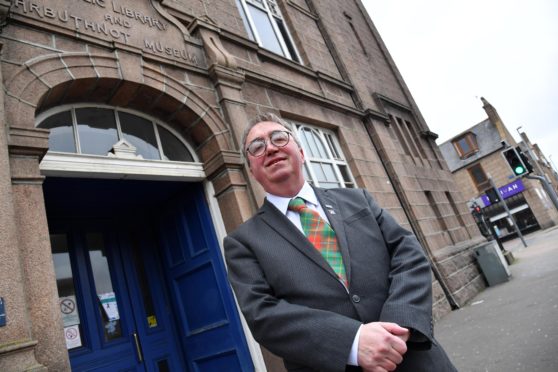A north-east councillor has raised concerns that those most likely to suffer from the knock-on effects of the lockdown have been ignored.
A region-wide assessment has been undertaken to identify the issues that may have affected community confidence in the ability of Aberdeenshire Council and other partners to respond to needs following the coronavirus pandemic.
The local authority-led review was a chance for people share how the outbreak has impacted them, in a bid to help the council create a recovery plan and to rebuild community confidence.
However, Peterhead councillor Stephen Calder claims not enough has been done to truly reflect the plight of those in some of the worst hit areas.
That criticism comes after parts of Peterhead, Fraserburgh, Banff, and Portsoy were highlighted at being more at risk from the impact of the virus than other areas of Aberdeenshire.
Mr Calder said: “As a result, the findings of the impact assessment do not reflect the impact on the most disadvantaged.
“From the demographic analysis of the survey, only 18% were men, only 6% had a long-term illness or disability, only 9% were in private rented accommodation, only 11% were retired and only 15% earned below £20,000.
“Where I live in central Peterhead 47% of households earn less than £20,000, compared to 23.5% across Aberdeenshire. The unemployment rate since Covid-19 is 10.8% in central Peterhead, but 3.8% across Aberdeenshire.”
Mr Calder said the positive outcomes listed in the report would not have been shared by some of his constituents living in small flats, the elderly who live alone, those with no access to transport, or school age children living in lower income families.
He added: “In central Peterhead– in the space of about three weeks during April, 22 town residents died of Covid-19 – the highest number in north-east Scotland.”
The impact assessment’s initial findings highlight worries over access to health care, the pandemic’s impact on mental health, fears over future transmission of the virus, short and long-term impacts on education and a notable increase in people’s alcohol consumption.
On a more positive note, people reported enjoying spending more time with their families, being more active during lockdown and finding new ways to relax.
Council leader Jim Gifford said: “It is really interesting so see the effects of everything that we have experienced laid out in terms of hard data.
“We have all seen the fantastic work that was done across our communities and that is clearly reflected in these surveys as is the generally positive response to the many services that the council kept going during the initial phases of the pandemic and beyond.
“There is much to learn from the results gathered here and we must ensure that the great work done in times of trouble is not lost when things start to improve.”










